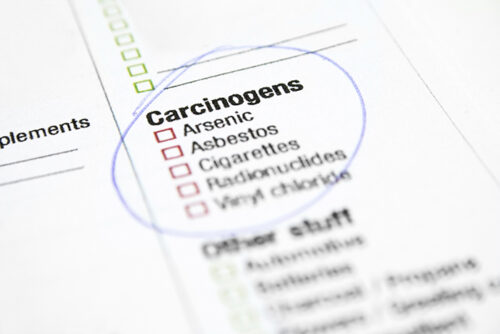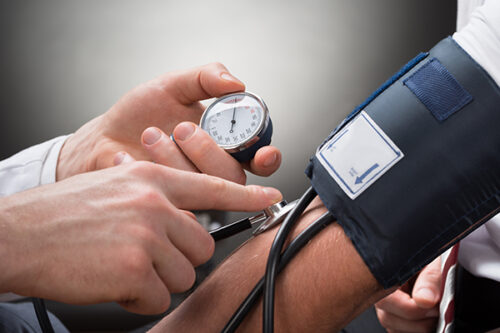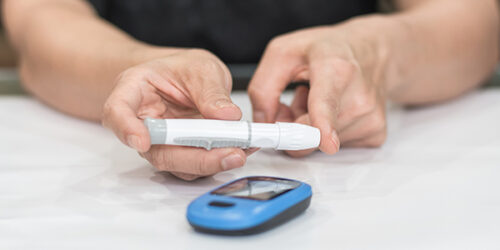Gout is on the Rise

By John McDougall, MD
Over the past 20 years the incidence of gout—a debilitating arthritis caused by eating rich food—has doubled in the USA.1 Not surprisingly, this is an increase that parallels the growing epidemic of obesity.2 Although gout is the most common form of inflammatory arthritis in men, affecting 1 to 2 % of men in Western countries and as many as 5 million men in the United States3 —this painful arthritic condition is essentially unknown in parts of the world where people consume a diet based on starches.4-6
The Diagnosis
I see many people who believe they suffer with gout, but they don’t. They may have joint pains, and some may have an elevated blood uric acid level, but their problem is usually degenerative arthritis (osteoarthritis). Gout is suspected if a joint—classically, the base of the big toe—becomes suddenly swollen, red, and painful. However, the definitive diagnosis is made by examining, under the microscope, fluid extracted from a painful joint and finding uric acid crystals (monosodium urate crystals).
The Cause
The inflammatory process in gout is caused by the accumulation of uric acid crystals in a joint. Excess uric acid in the body can be caused by an increase in production by the body and by under-elimination by the kidneys. However, the most important cause is an increase in the intake of rich foods, which are high in uric acid precursors, known as purines. These molecules are the building blocks of genetic materials—DNA and RNA. The muscles of animals—meat, poultry, fish and seafood—are the most important sources of purines. Vegetable sources of purines do not contribute to the risk of having an attack of gout. According to an article in the New England Journal of Medicine, “Higher levels of meat and seafood consumption are associated with an increased risk of gout…Moderate intake of purine-rich vegetables or protein is not associated with an increased risk of gout.”7 Other lifestyle habits, like alcohol consumption are also believed to encourage the deposition of uric acid crystals in the joints.
Weight Loss from Any Cause Can Start Gout
I have seen a couple of my patients develop gout after changing to our diet.8 This is caused by the release of uric acid from their dissolving body fat. These molecules can move to the joints where they may form crystals. I worry about this happening only with patients with a history of previous gout. Even for these people, the risk of an attack is very small. However, for some patients any risk is too much and they may choose to add a further measure of protection by taking a time-honored gout medication—colchicine .05 mg daily for about 6 months—in order to eliminate the possibility of an attack while losing weight.
Not surprisingly, gout attacks have been seen more frequently since the popularity of high protein diets (Paleo, Keto etc.).3 The foods recommended by these low-carbohydrate diets are very high in purines. Second, these diets cause rapid weight loss and thereby facilitate the release of uric acid from the body fat. Lastly, these diets cause dehydration and place added stress on the kidneys, which might make people more sensitive to the rise in uric acid.
The Medical Treatments
Early treatment, within 24 hours, is the key to resolving an episode of acute gouty arthritis. Colchicine, the traditional agent used, is more specific for gout than are the NSAIDs, which are also effective. Although elevated levels of uric acid in the blood are a major risk factor for the development of gout, acute gouty arthritis can occur in the presence of normal serum uric acid levels. Patients suffering with on-going damage from elevated uric acid levels may need treatment with medication that lowers uric acid in the body (like allopurinol). Just having an elevated uric acid level without chronically active arthritis (or recurrent kidney stones) is not a cause for treatment with medication (you still need to change your diet).
The Cure
All dietary recommendations for the prevention of gout attacks strongly recommend avoiding the use of muscle foods. Some authorities also warn against high protein vegetable foods, like beans, peas and lentils. Actually, higher intake of vegetable protein is associated with a lower risk of gout.3 Therefore, if a patient avoids the animal foods, including some of the higher protein vegetable foods mentioned above will cause no trouble. Based on population studies and the well-established cause-and-effect mechanisms between animal muscles and gout, I believe the common form of diet-caused gout cannot occur in people who follow a McDougall-type diet. However, most people have large storages of uric acid in their tissues which may take months of healthy eating and associated weight loss to dissolve away.
References:
1) Arromdee E, Michet CJ, Crowson CS, O’Fallon WM, Gabriel SE. Epidemiology of gout: is the incidence rising? J Rheumatol. 2002 Nov;29(11):2403-6.
2) Lyu LC, Hsu CY, Yeh CY, Lee MS, Huang SH, Chen CL. A case-control study of the association of diet and obesity with gout in Taiwan. Am J Clin Nutr. 2003 Oct;78(4):690-701.
3) Lee SJ, Terkeltaub RA, Kavanaugh A. Recent developments in diet and gout. Curr Opin Rheumatol. 2006 Mar;18(2):193-8.
4) Torralba TP, Bayani-Sioson PS. The Filipino and gout. Semin Arthritis Rheum. 1975 May;4(4):307-20.
5) Johnson RJ, Titte S, Cade JR, Rideout BA, Oliver WJ. Uric acid, evolution and primitive cultures. Semin Nephrol. 2005 Jan;25(1):3-8.
6) Roberts-Thomson RA, Roberts-Thomson PJ. Rheumatic disease and the Australian aborigine. Ann Rheum Dis. 1999 May;58(5):266-70.
7) Choi HK, Atkinson K, Karlson EW, Willett W, Curhan G. Purine-rich foods, dairy and protein intake, and the risk of gout in men. N Engl J Med. 2004 Mar 11;350(11):1093-103.
8) Antozzi P, Soto F, Arias F, Carrodeguas L, Ropos T, Zundel N, Szomstein S, Rosenthal R. Development of acute gouty attack in the morbidly obese population after bariatric surgery. Obes Surg. 2005 Mar;15(3):405-7.
Recommended Articles

Arsenic In Rice

The Dangers of Aggressively Treating High Blood Pressure





